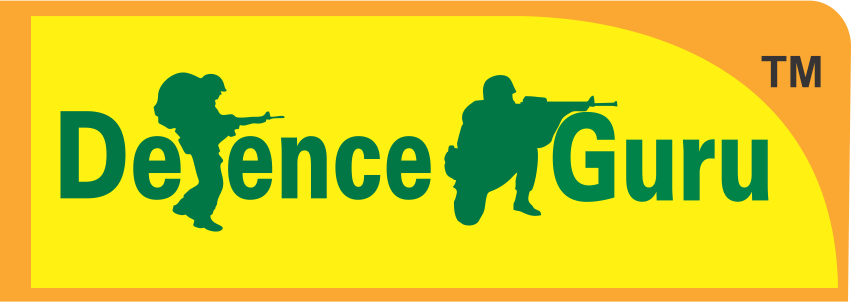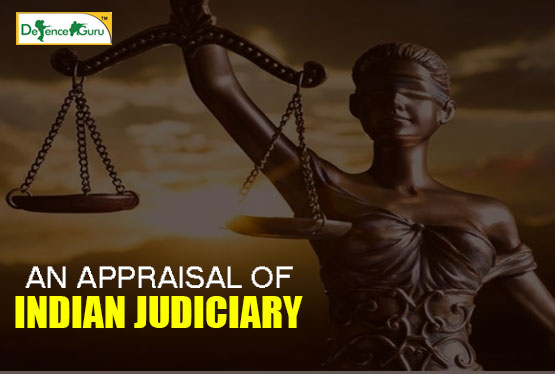AN APPRAISAL OF INDIAN JUDICIARY LIKE NONE OTHER!
At the peak of Indian democratic pillars lies the Judiciary system. When going for SSB interview, the age- old, monumental topic of Indian Judiciary is most frequently put up.
Law and rules are the 2 ultimatum of Indian Judiciary. The aim behind this set- up is welfare of the citizens. Opening the dictionary of Judiciary, one would find a pile of courts, laws, rights, principles, and judges. Bringing to you a nano insight into all of the above elements, here is a superlative article on Indian Judiciary for SSB interview:
- Coming into being on 26 January, 1950, India formulated its Judiciary system consisting of a pyramid of courts to enforce laws and solve disputes. The heirachy of courts is as follows:
SUPREME COURT: Can you guess it by the name? Oh yes, Supreme Court is the highest, the end- most place of appeal. Whichever law, rule or statement is passed by Supreme Court it becomes final and rest all have to abide by it. It constitutes a panel of 30 Judges along with other proficient judges for advisory purpose. The court resolves appeals, writ petitions and cases requiring immediate decision.
HIGH COURT: Counted 25 in number, High Courts are set up in each state or union territory to monitor legal issues. It functions to resolve economic issues and legal documentation. There is a panel of 94 judges split up into 71 permanent and 23 additional judges.
DISTRICT COURTS: Controlled by High courts, the various district courts run at a secondary level in each State. It manages Civil and criminal issues. Add to that the body of district courts is lengthy as it includes family, civil, criminal and other courts. They are formed as per the population of the State.
LOK ADALAT: One of the subordinate courts under the District courts, Lok Adalat resolves issues amicably between two parties. It can be formulated either by High court legal service, district legal service or taluk legal service.
- Hope you are not tired? Because if you are, get a cup of coffee as there is a lot more coming up. It’s time to throw some light on the functions of Indian Judiciary:
- Resolving disputes: Be it a matter of conflict between citizens, states, governments or states and governments it is the Indian Judiciary (courts) that come to their rescue by resolving the case.
- Judicial review: This is a process whereby the Judiciary can overwrite laws passed by Parliament.
- Fundamental rights: One of the most crucial role of Indian Judiciary is to safeguard the fundamental rights and uphold the law.
- Safeguarding the constitution: Indian Legislature acts as a custodian of the federal government, its spirit and character.
- An overall guardian: Legislature is the security channel of the whole nation. It guards the individual liberty of people and save them from arbitrary action against the government.
- Supreme court: The highest court of India manages fundamental duty, administrative function, advisory function, and prevention of violation of law
- High court: Various functions such as supervisory and consultative role are catered by high court.
- District courts: The subordinate courts look after criminal and civil matters. Add to that it can give life imprisonment or capital punishment.
- Not mentioning the features of Indian Judiciary would be a big miss. So here is a precise collection of the salient features of Indian Judiciary:
- United and solo: The Indian Judiciary is integrated and single, that is, all the courts are connected to the highest Supreme court+ there is only one judiciary system for whole India.
- Autonomous and lavish: The Indian Judiciary is independent as predictable through its functions such as: well qualified and able judges, difficult impeachment of Judges, handsome salary and benefits awarded to judges, and independent advisory of Judiciary.
- Clarify the constitution: Indian Judiciary, especially the Supreme Court writes and enacts the constitution. It is the final interpretator of the Constitution.
- Judiciary and executive: Indian constitution separates judiciary and executive.
- Open trial: Indian judiciary is just in all matters as it lends chance to the culprit to defend himself in all way.
Huh! By now you surely know that shouldering a lot of responsibilities, Indian Judiciary is the core element of our nation’s constitution. It casts a spell of protection which no one else can! Hence, not only is it mandatory from SSB point of view but also a moral obligation to have a know- how of the topic. Just enjoy the topic and read it in a rhythm!






